Numerical Solutions of a Novel Designed Prevention Class in the HIV Nonlinear Model
2021-11-05ZulqurnainSabirMuhammadUmarMuhammadAsifZahoorRajaandDumitruBaleanu
Zulqurnain Sabir,Muhammad Umar,Muhammad Asif Zahoor Rajaand Dumitru Baleanu
1Department of Mathematics and Statistics,Hazara University,Mansehra,21120,Pakistan
2Future Technology Research Center,National Yunlin University of Science and Technology,Yunlin,64002,Taiwan
3Department of Mathematics,Cankaya University,Ankara,06790,Turkey
4Institute of Space Science,Magurele,Bucharest,77125,Romania
ABSTRACT The presented research aims to design a new prevention class(P)in the HIV nonlinear system,i.e.,the HIPV model.Then numerical treatment of the newly formulated HIPV model is portrayed handled by using the strength of stochastic procedure based numerical computing schemes exploiting the artificial neural networks(ANNs)modeling legacy together with the optimization competence of the hybrid of global and local search schemes via genetic algorithms(GAs)and active-set approach(ASA),i.e.,GA-ASA.The optimization performances through GA-ASA are accessed by presenting an error-based fitness function designed for all the classes of the HIPV model and its corresponding initial conditions represented with nonlinear systems of ODEs.To check the exactness of the proposed stochastic scheme,the comparison of the obtained results and Adams numerical results is performed.For the convergence measures,the learning curves are presented based on the different contact rate values.Moreover,the statistical performances through different operators indicate the stability and reliability of the proposed stochastic scheme to solve the novel designed HIPV model.
KEYWORDS Prevention class;HIV;supervised neural networks;infection model;artificial neural networks;convergence curves;active-set algorithm;adams results;genetic algorithms
1 Introduction
Humankind is facing many deathly infection viruses for many years.HIV is one infectious virus that exists almost in each continent of the world with a low or high rate.Most viruses do not have proper treatment and vaccinations like coronavirus,dengue virus,and HIV[1–3].Humanity can survive such diseases by taking some prevention or precautionary measures.The present study introduces a prevention class(P)in the HIV nonlinear mathematical system,i.e.,the HIPV model.This prevention class describes the mathematical form based on four parameters,i.e.,injection drug,safety measures,avoid from pregnancy and contact rate.The introductory HIPV nonlinear mathematical model takes the form as:

whereH(τ),I(τ),P(τ)andV(τ)indicate the T-cells concentration,individuals infected from this virus,prevention measures and particles free from virus,respectively.Furthermore,Tmaxshows the maximum T-cells concentration,rrepresents the T-cells growth rate concentration,aindicates the injection drug,bshows the safety measures,cis used to avoid from pregnancy,δdescribes the contact rate,qis the source of uninfected T-cells,nshows the virus particles made by infected T-cell andkindicates the virus rate.Many researchers using various schemes have investigated the HIV nonlinear systems.Few of them are Khan et al.[4]explored the fractional order HIV model involving the Liouville–Caputo and Atangana–Baleanu–Caputo derivatives.Wang et al.[5]calculated the travelling wave solutions for a nonlocal dispersal HIV infection dynamical model.Jiang et al.[6]discussed the dynamics of stochastic HIV-1 infection model with logistic growth.Arshad et al.[7]presented the effects of the HIV infection on CD4+T-cell population based on a fractional-order model.Naik et al.[8]presented the global dynamics of a fractional order model for the transmission of HIV epidemic with optimal control.Elaiw et al.[9]checked the stability of delayed HIV dynamics models with two latent reservoirs and immune impairment.Lin et al.[10]presented the threshold dynamics of an HIV-1 virus model with both virus-to-cell and cell-to-cell transmissions,intracellular delay,and humoral immunity.Zhang et al.[11]discussed the stabilization and sustained release of HIV inhibitors by encapsulation in silk fibroin disks.Beside these,many renewed relevant studies are reported recently for HIV dynamics,see in[12–17]and references cited therein.
All these citations related to HIV model have their individual novelty,merits and advantages.But no one has designed the prevention class in the nonlinear HIV model.The aim of this current work is to design the HIPV model and investigate numerically by using the artificial neural networks together with the competence of the hybrid of global and local search schemes called genetic algorithm(GA)and active-set approach(ASA),i.e.,GA-ASA.The stochastic schemes have been applied to explore many linear/nonlinear,singular/non-singular and biological,delayed,fractional,prediction and pantograph differential models.Few well-known applications related to these applications are Thomas-Fermi singular system[18],singular models using Gudermannian kernel functions[19],mathematical model for random matrix theory[20],nonlinear model based on prey-predator[21],Bouc–Wen hysteresis ODEs model for piezostage actuator[22],mosquito dispersal model[23],nonlinear Van-der Pol Mathieu’s oscillatory models[24],functional singular system[25],squeezing flow with heat transfer model[26],delay differential model[27],nonlinear electric circuit models[28],singular three-point differential system[29],financial market forecasting model[30],transmission model in human head[31],nonlinear dusty plasma systems[32]and multi- singular fractional systems[33].The workflow diagram of the HIPV model is presented in Fig.1.
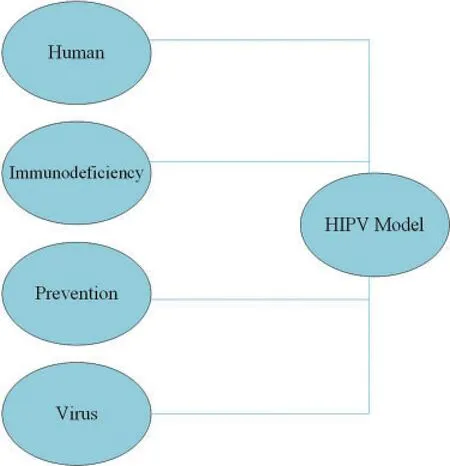
Figure 1:Workflow diagram of the HIPV nonlinear mathematical model
Some novel prominent features of the current work are described as:
• The design of prevention class in the HIV nonlinear mathematical system is presented using the injection drug,safety measures,avoid from pregnancy and contact rate.
• The designed HIPV nonlinear system is effectively solved by using the ANN along with the optimization of GA-ASA combinations.
• For the convergence of HIPV system,the learning curves through GA and GA-ASAS are presented using different values of the contact rate.
• The consistent overlapped outcomes through GA-ASA and the Adams numerical routines validate the exactness of the designed scheme.
• The endorsement of the presentation is trained for different statistical valuations to get the numerical solutions of HIPV system.
• The advantages of the designed scheme are simply performed for the nonlinear HIPV system,easy to understand,operated efficiently,constancy and inclusive applicability are the other significant influences.
The remaining parts of current research are described as:Section 2 designates the methodology and statistical presentations.Section 3 shows the result simulations.Section 4 indicates the final declarations and future research reports.
2 Proposed Structure
The designed structure of ANNs by using the optimization of GA-ASA is presented in two steps for solving the nonlinear mathematical HIPV model,given as:
• For the ANNs parameters,the design of fitness function is presented.
• Essential settings are provided to optimize the fitness function using the hybrid combination of GA-ASA.
2.1 Structure of ANNs
The mathematical formulations to solve each class of the nonlinear Human Immunodeficiency Prevention Virus(HIPV)are obtainable in this section.The proposed solutions of the nonlinear
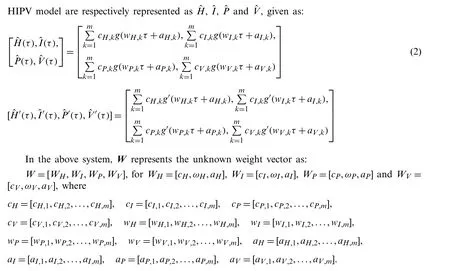

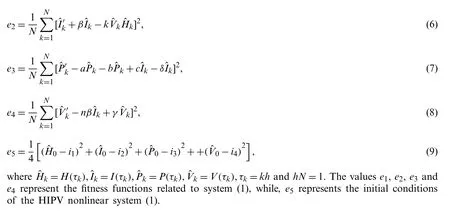
2.2 Optimization Performances:GA-ASA
In this section,the optimal performance through GA-ASA for solving the mathematical HIPV nonlinear model is presented.The designed ANNs structure through GA-ASA for solving the nonlinear mathematical HIPV model is shown in Fig.2.
GA is a global search optimization procedure,which is implemented to solve the stiff,complicated and nonlinear systems.In this study,GA is implemented as an optimization procedure to solve the HIPV model.To find the best solutions of the network,GA works through the selection operator,crossover process,reproduction practice and mutation procedure.Recently,GA has been applied in extensive optimization practices like as,system of hospitalization expenditure[34],higher order nonlinear singular systems[35],feature group in cancer microarray virus[36],singular functional based boundary value models[37],nonlinear Troesch’s system[38],vehicle system routine[39],active noise control systems[40,41],monorail vehicle system dynamics[42]and economic load dispatch problem[43].
ASA is known as a quick and rapid local search optimization scheme,which is broadly executed to solve both types of models based on constrained/unconstrained systems.ASA is implemented in numerous optimizations networks based complex models.In recent few years,ASA is implemented to execute the real-time optimal control[44],multi-rigid-body dynamic contact problems[45],a class of nonlinear problems with monotone operators[46],predictive control for a ball and beam system[47]and large scale optimization of cardiac defibrillation[48].For the slowness of the global search method,the hybridization procedure is applied via GA-ASA and comprehensive pseudocode of the ANN using GA-ASA combination is shown in Tab.1.
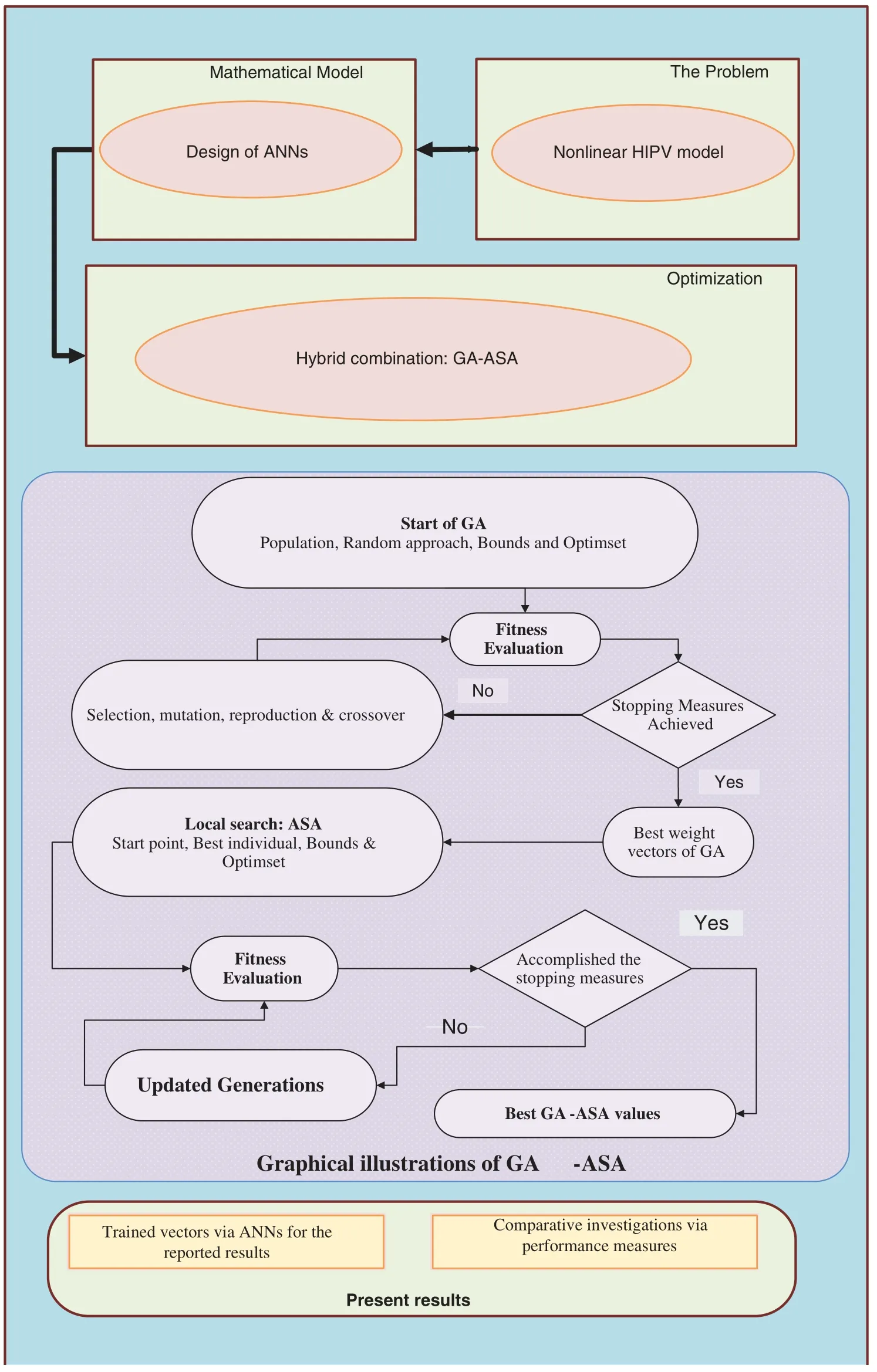
Figure 2:Designed arrangements of the current approach to solve the HIPV nonlinear mathematical model
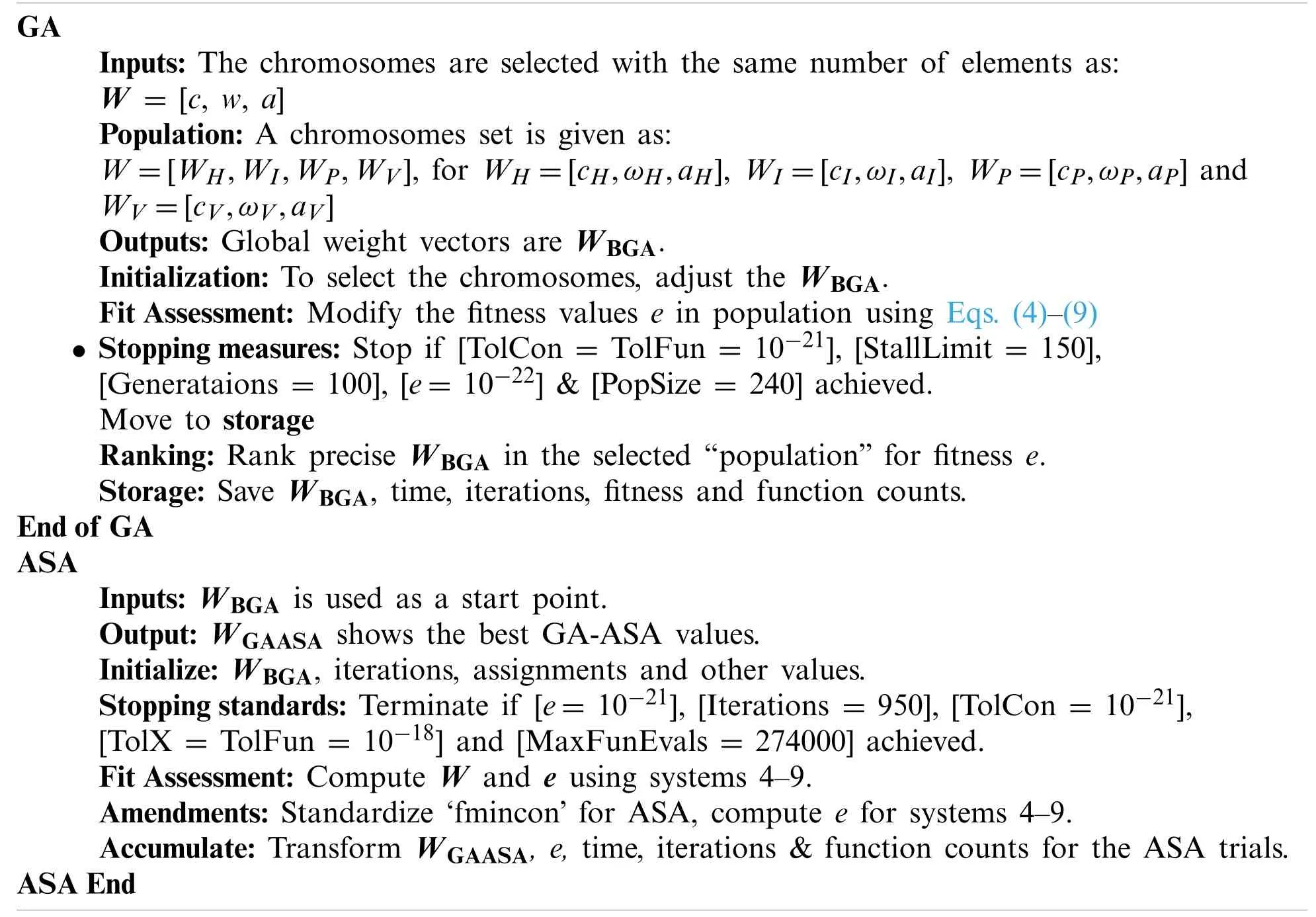
Table 1:Optimization processes through ANN using GA-ASA to solve the nonlinear HIPV mathematical model
2.3 Performance Measures
The statistical operator performances based on the “variance account for(VAF),” “mean absolute deviation(MAD),” “Theil’s inequality coefficient(TIC)” and “semi interquartile range(S.I.R)” along with the Global performances of these operators are mathematically presented to solve the HIVP nonlinear model in this section.


3 Simulations and Results
In this section,the details solution for solving the HIPV nonlinear model are provided.For the convergence measures of the prevention class,six different cases have been presented based on the contact rate.Moreover,the obtained results have been compared with the Adams numerical results to authenticate the correctness of the HIPV nonlinear model.The statistical performances are also provided by taking different measures to check the consistency and reliability of the proposed scheme.The updated mathematical form of the nonlinear HIPV system with suitable parameters is given as:
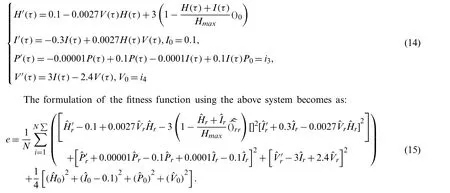
The optimization of the above fitness function is performed to solve the HIPV nonlinear system using the hybrid combination of GA-ASA for 100 executions by taking 120 variables.The best weight vectors show the proposed solutions of the HIPV nonlinear mathematical model presented as:

The fitness function shown in Eq.(4)is applied for the optimization of the hybrid computing arrangements of GA-ASA for solving the nonlinear HIPV model.The convergence or learning curves,restructured generations of the fitness functions are plotted in Figs.3–8 by taking different values of the contact rate(δ)based on the nonlinear HIPV mathematical model.One may observed that in the start the optimization performance of fitness function using GA is fast but after few generations its convergence competency reduced.Then the hybridization process of GA with the local search ASA is implemented that shows more proficiency in order to solve the nonlinear HIPV system.Hence,the reliability and steadfast convergence are obtained to solve the nonlinear HIPV system using the GA-ASA.One may accomplish that the accuracy through convergence is obtained using the stochastic GA-ASA process for solving the nonlinear HIPV mathematical model.
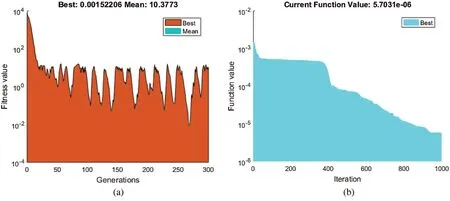
Figure 3:Convergence curves using the optimization process for solving the nonlinear HIPV system by taking contact rate δ =0.1(a)Convergence curve based on GA(b)Convergence curve based on GA-ASA
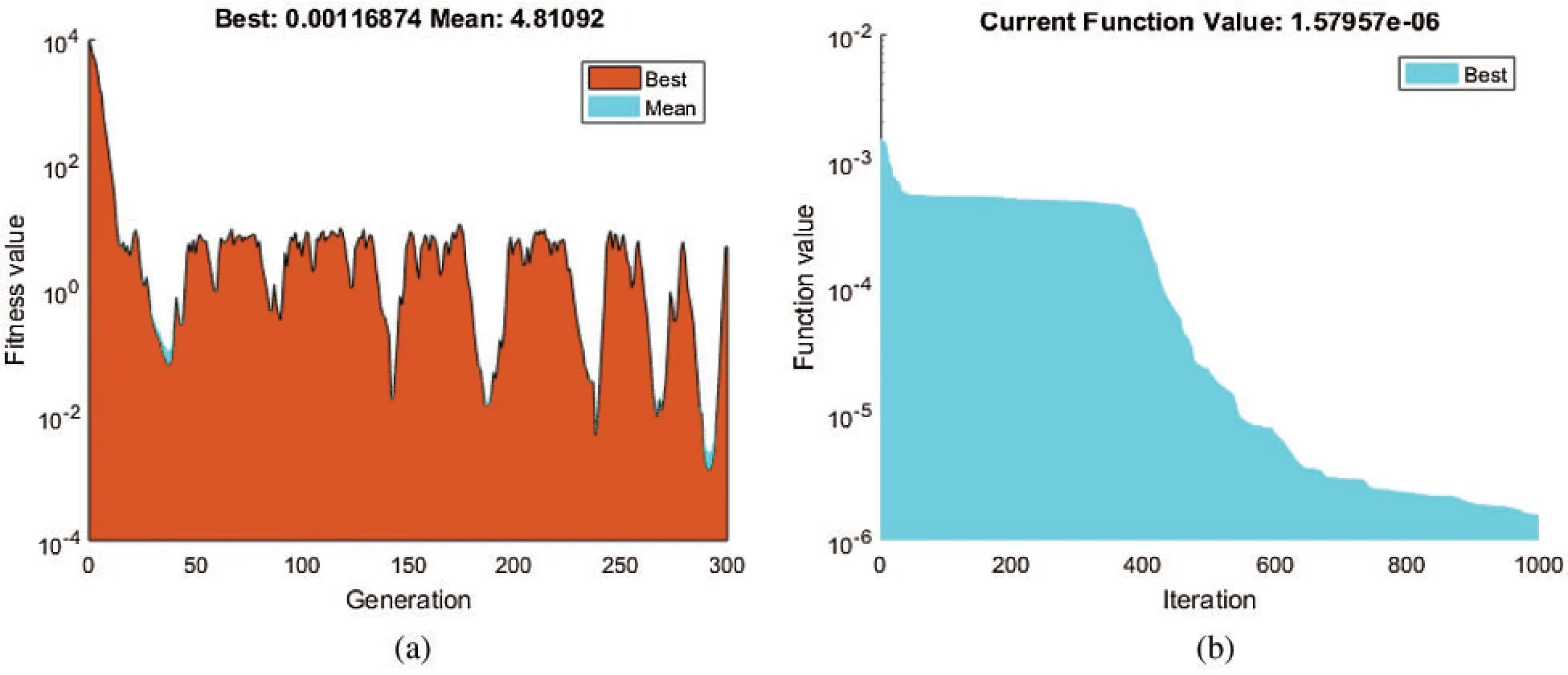
Figure 4:Convergence curves using the optimization process for solving the nonlinear HIPV system by taking contact rate δ =0.2(a)Convergence curve based on GA(b)Convergence curve based on GA-ASA
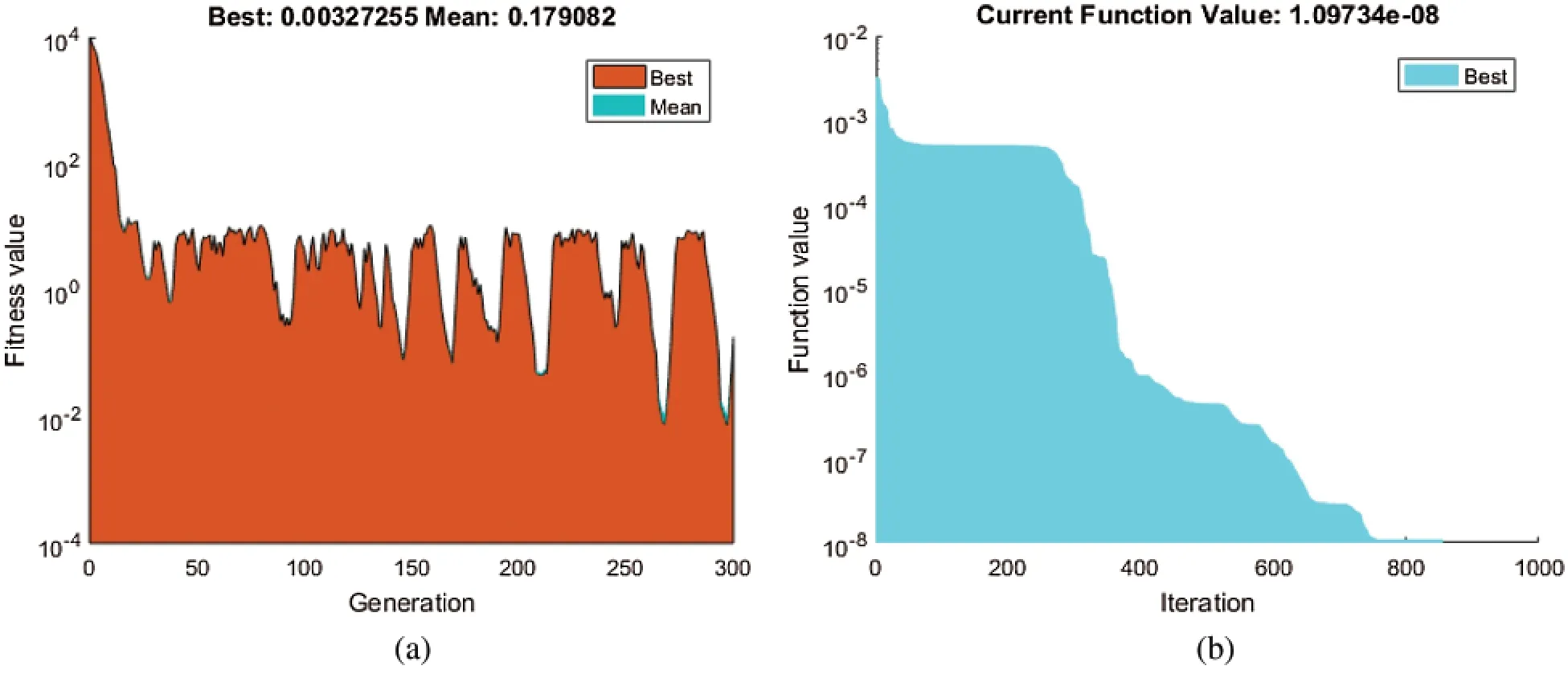
Figure 5:Convergence curves using the optimization process for solving the nonlinear HIPV system by taking contact rate δ =0.3(a)Convergence curve based on GA(b)Convergence curve based on GA-ASA
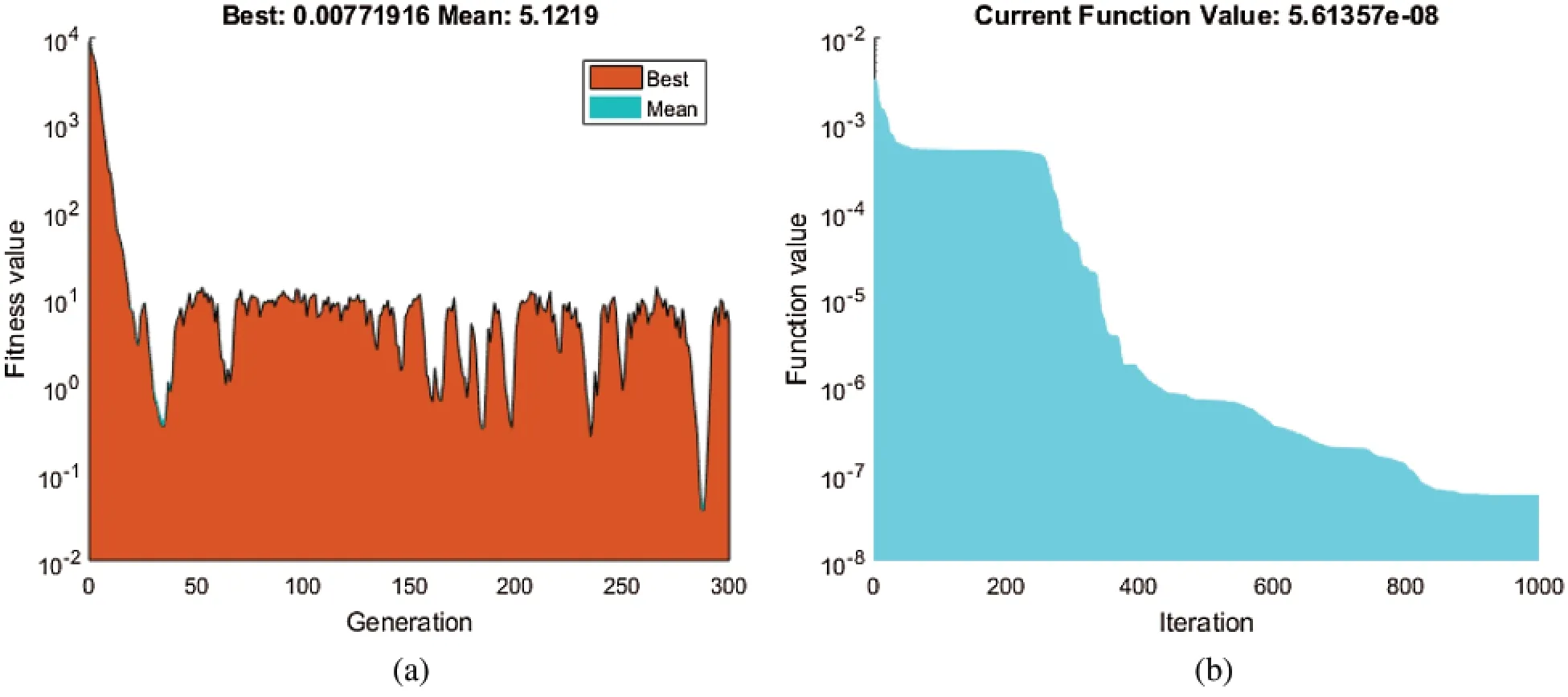
Figure 6:Convergence curves using the optimization process for solving the nonlinear HIPV system by taking contact rate δ =0.4(a)Convergence curve based on GA(b)Convergence curve based on GA-ASA
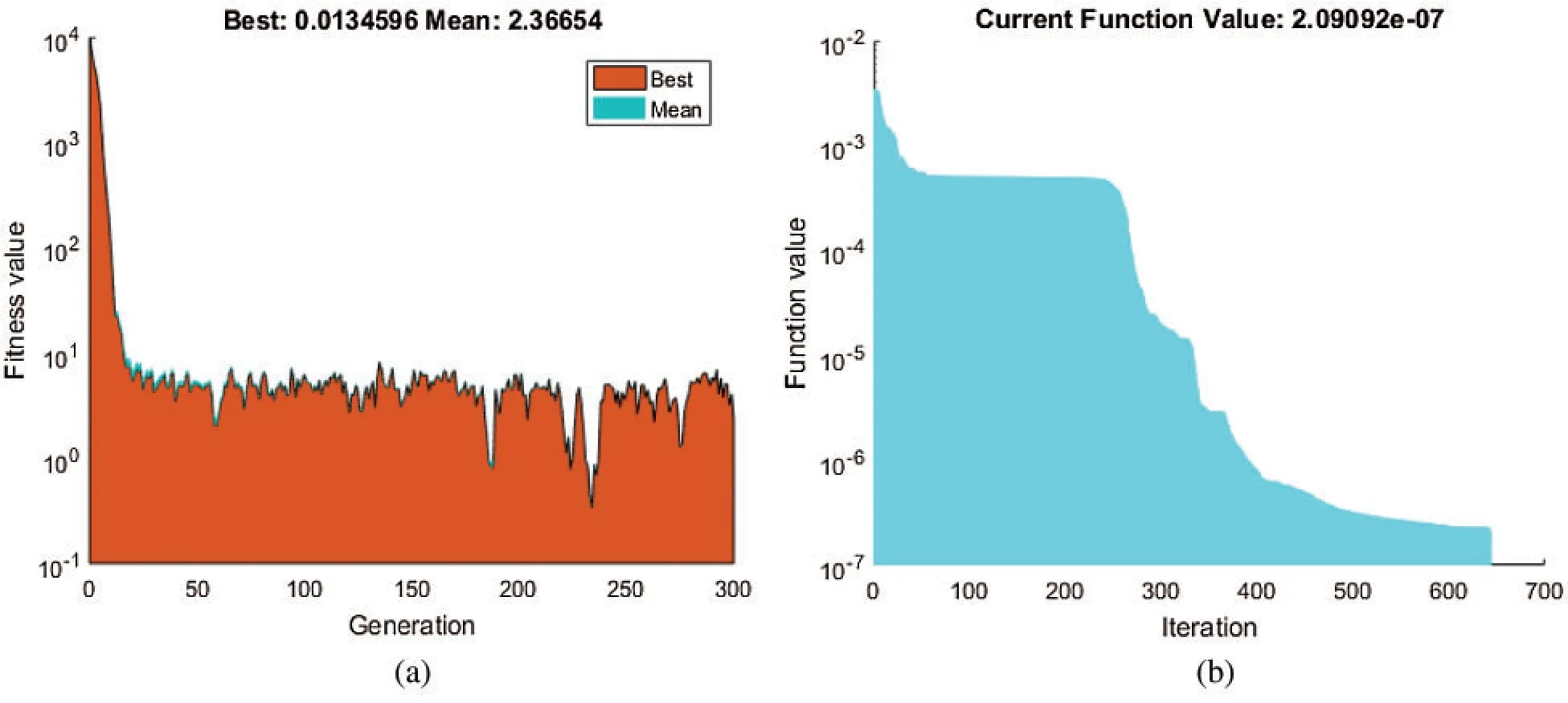
Figure 7:Convergence curves using the optimization process for solving the nonlinear HIPV system by taking contact rate δ =0.5(a)Convergence curve based on GA(b)Convergence curve based on GA-ASA
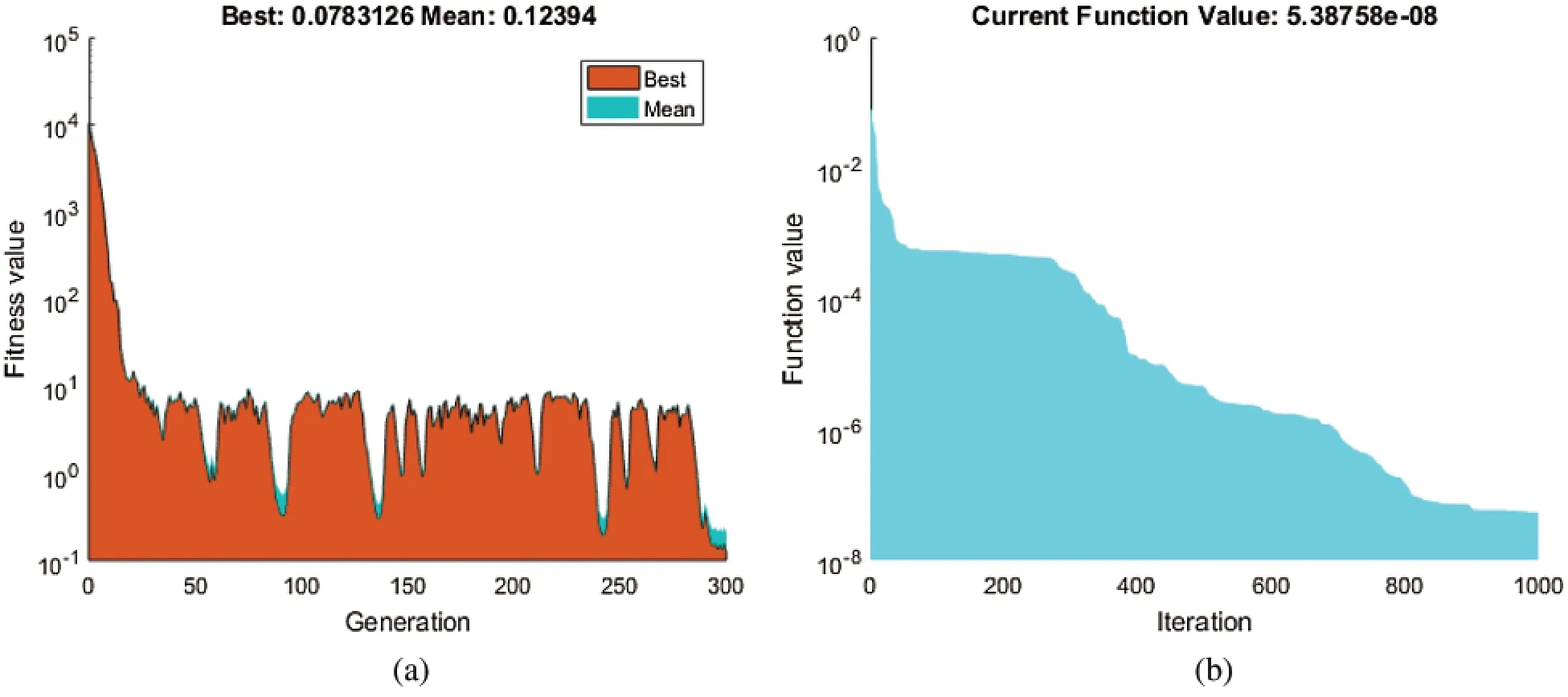
Figure 8:Convergence curves using the optimization process for solving the nonlinear HIPV system by taking contact rate δ =0.6(a)Convergence curve based on GA(b)Convergence curve based on GA-ASA
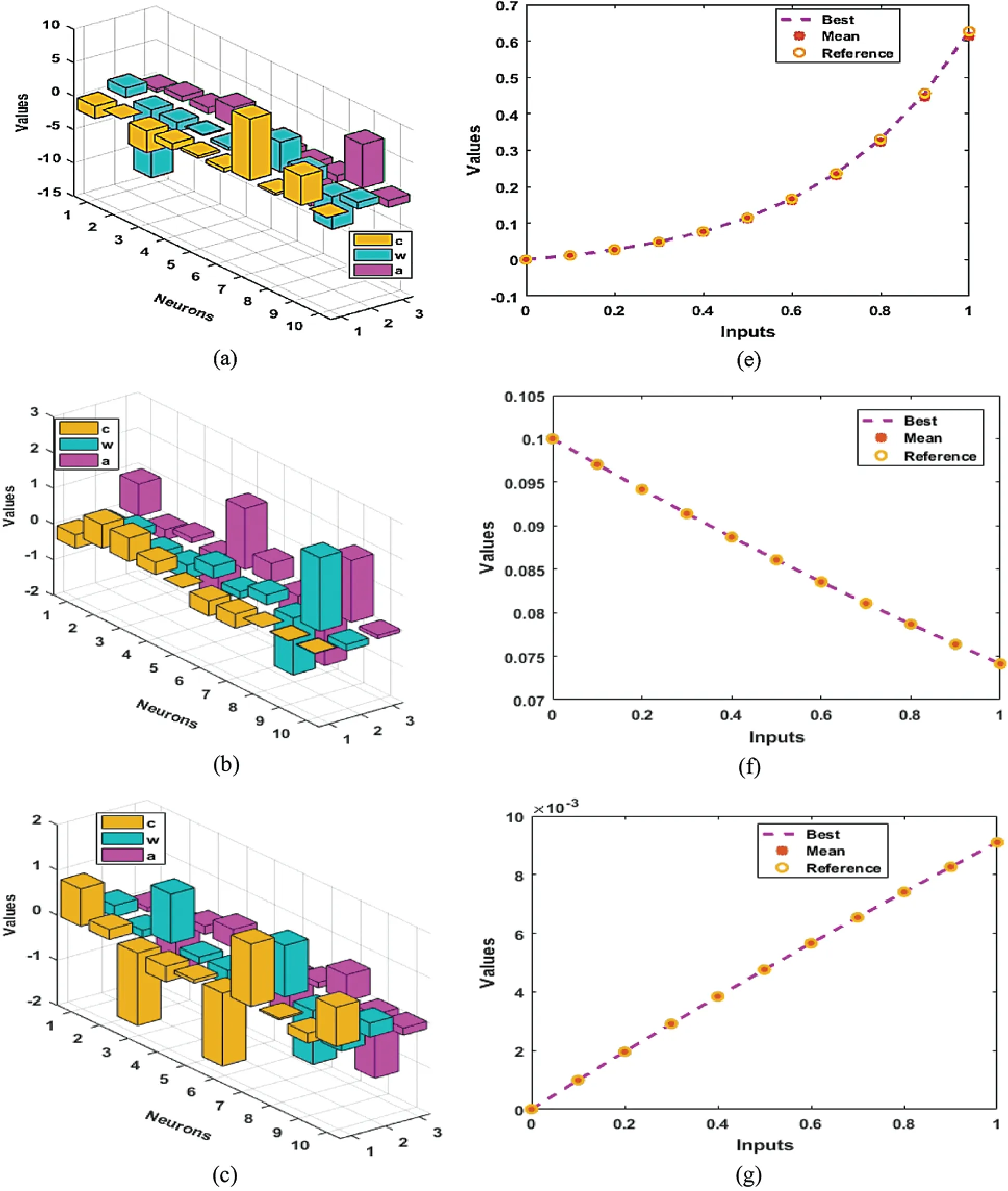
Figure 9:(continued)
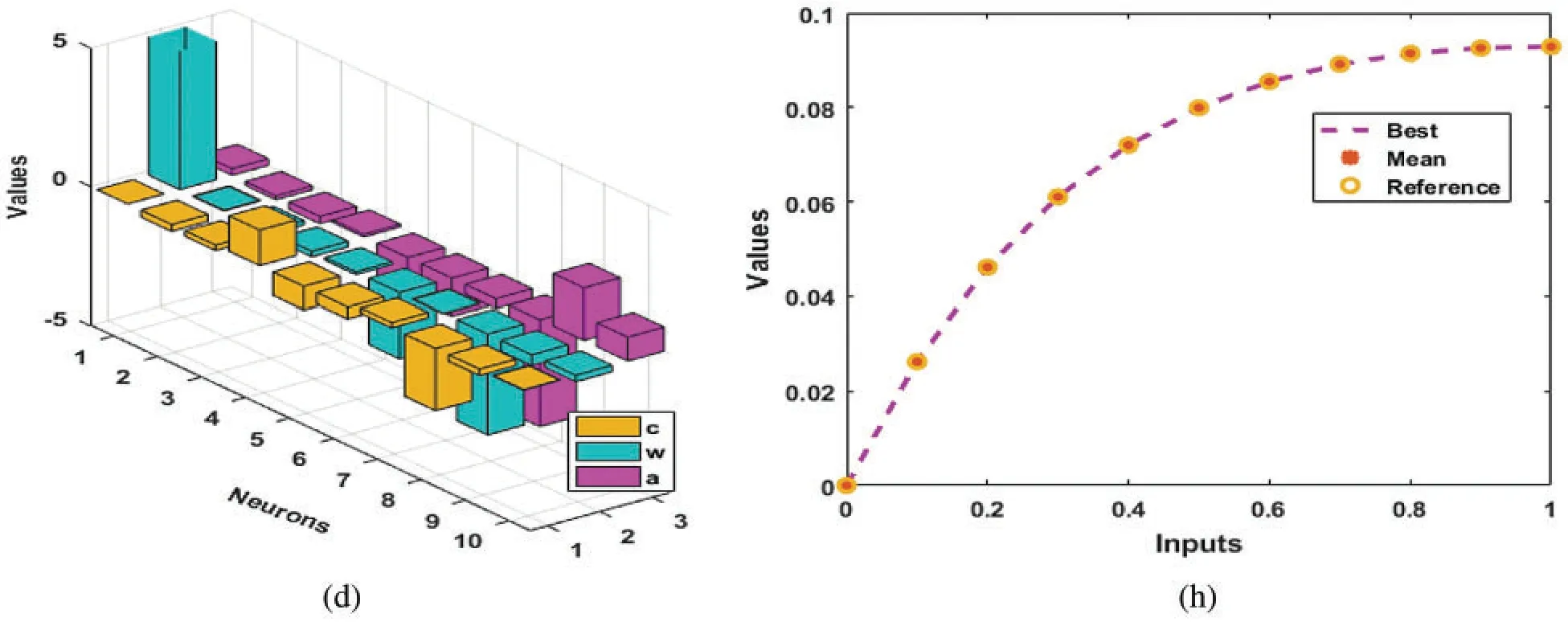
Figure 9:Best set of weight vectors along with the comparison of best,mean and reference solutions to solve the HIPV nonlinear mathematical system(a)Best weights for H(τ)(b)Best weights for I(τ)(c)Best weights for P(τ)(d)Best weights for V(τ)(e)Results for class H(τ)(f)Results for class I(τ)(g)Results for class P(τ)(h)Results for class V(τ)
The proposed numerical solutions are obtained using the above systems(16–19)for 0 to 1 input with the step size of 0.1 of the HIPV nonlinear mathematical model along with the best weights drawn in the Figs.9a–9d.While the second half of Figs.9e–9h presents the comparison of the best and mean results with the Adam reference results to solve the HIPV nonlinear model.The overlapping of the results shows the confidence and perfection of the designed scheme.Fig.10 shows the absolute error(AE)plots for each class of the HIPV nonlinear model.The best and mean AE values are plotted for each category of the HIPV model.One may observe that the best AE values of the categoriesH(τ),I(τ),P(τ)andV(τ)lie around 10–06–10–08,10−08−10−10,10−06−10−07and 10−05−10−07,respectively.While,the mean values of AE for each category of the HIPV model lie around 10−02−10−04,10−05−10−06,10−05−10−06and 10−04−10−05,respectively.Fig.11 represents the performance operators based on E-VAF,MAD and TIC values to solve the HIPV nonlinear model.One may see that the best performance of theH(τ)class using the operators E-VAF,MAD and TIC lie around 10−10−10−11,10−06−10−07and 10−10−10−11,respectively.The best performances ofI(τ)for these statistical operators lie around 10−11−10−12,10−07−10−08and 10−11−10−12,respectively.While,the best performances ofP(τ)andV(τ)based on these performances lie around 10−08−10−09,10−06−10−07and 10−10−10−11,respectively.On the behalf of these performances,one can accomplish that the proposed scheme is precise.
The graphical representations along with histograms and boxplots using the statistical actions to authenticate the convergence measures are given in Figs.12–14 for solving the HIPV model.Fig 12 shows the TIC values for 100 trials to solve the HIPV nonlinear model and almost 95%runs achieved very good accuracy level that are in between 10−10−10−10.The MAD performances are plotted in Fig.13 and almost 95% runs achieved accuracy level in between 10−04−10−06.Likewise,the E-VAF performance are plotted in Fig.14 and one can observe that almost 95%runs achieved an accuracy level in between 10−06−10−08.These best presentations of the runs using the ANN along with GA-ASA are found to be satisfactory for the E-VAF,TIC and MAD operators.
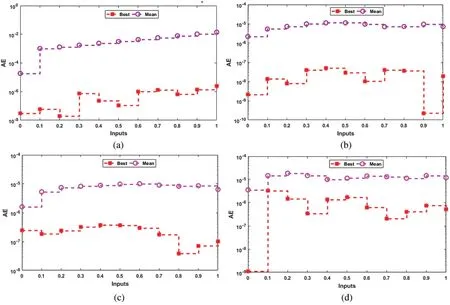
Figure 10:AE values for each category of the HIPV nonlinear model(a)AE for class H(τ)(b)AE for I(τ) class(c)AE for P(τ) class(d)AE for V(τ) class
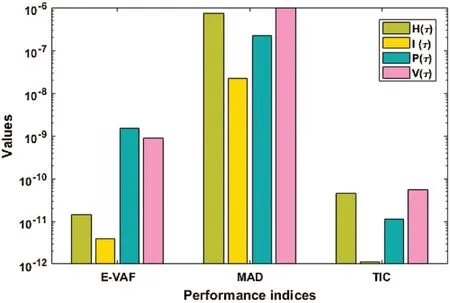
Figure 11:Performance operators based on E-VAF,MAD and TIC values to solve the HIPV nonlinear model
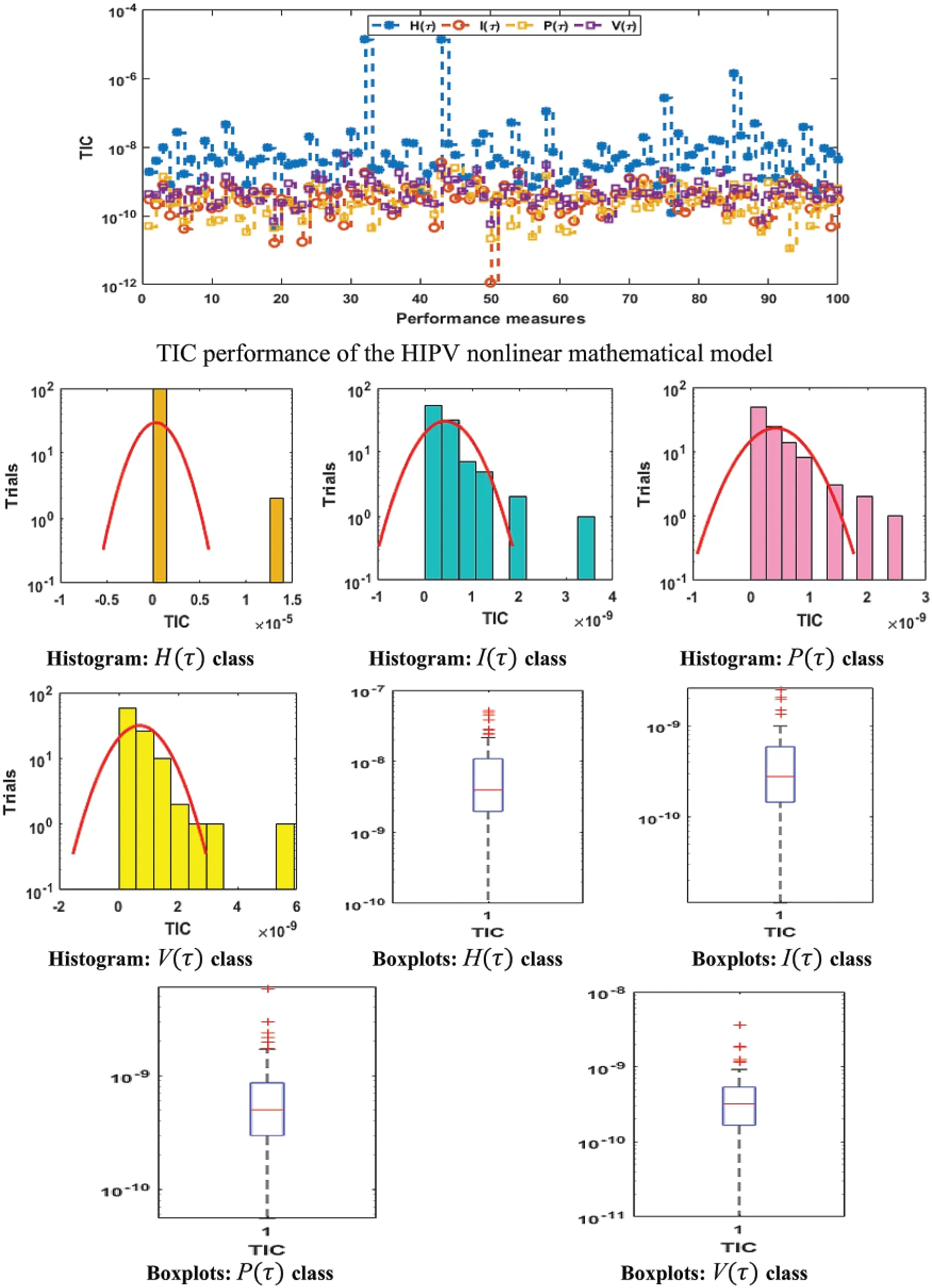
Figure 12:Convergence plots for the TIC values along with histogram/Boxplots to solve the HIPV nonlinear model
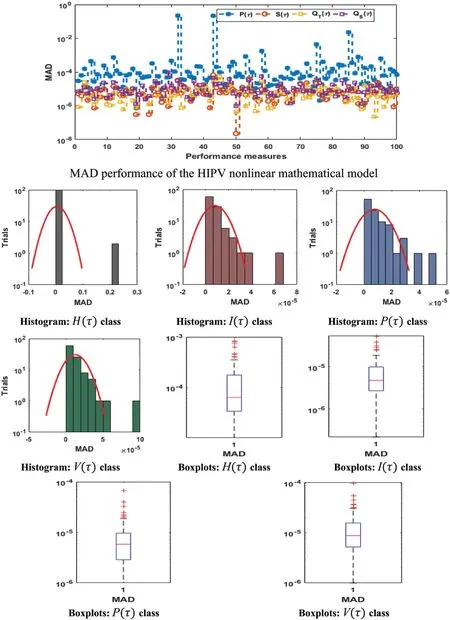
Figure 13:Convergence plots for the MAD values along with histogram/Boxplots to solve the HIPV nonlinear model
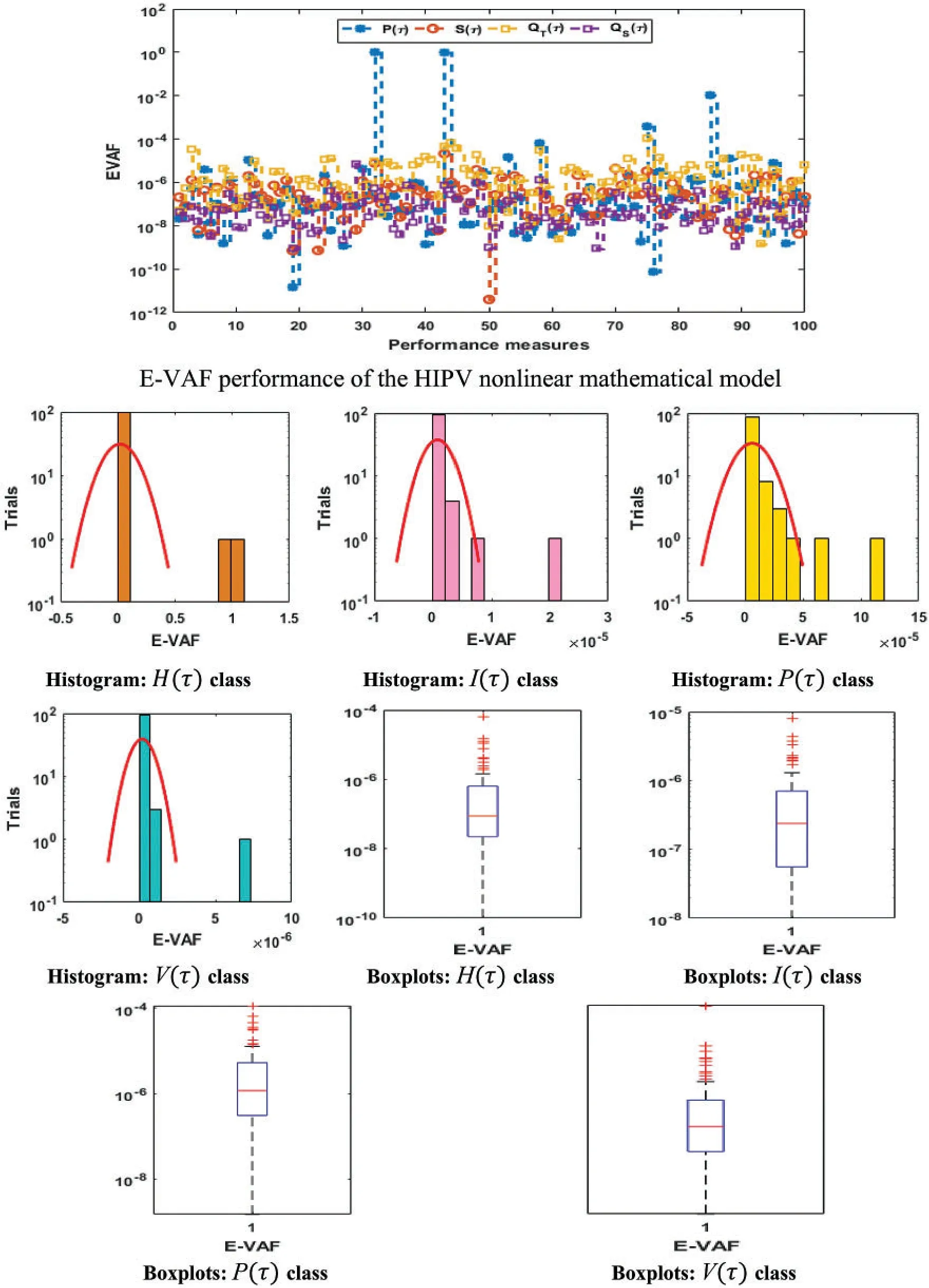
Figure 14:Convergence plots for the E-VAF values along with histogram/Boxplots to solve the HIPV nonlinear model
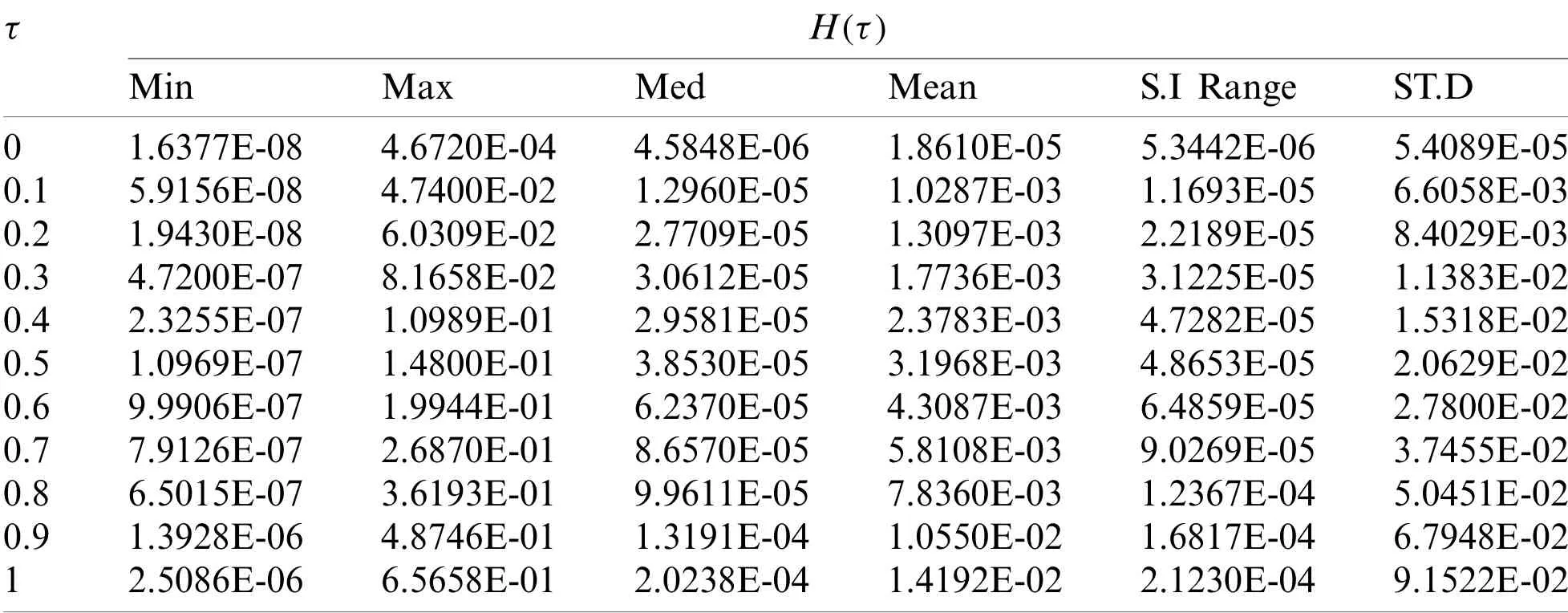
Table 2:Statistical presentations for solving the HIPV nonlinear model based on H(τ) class
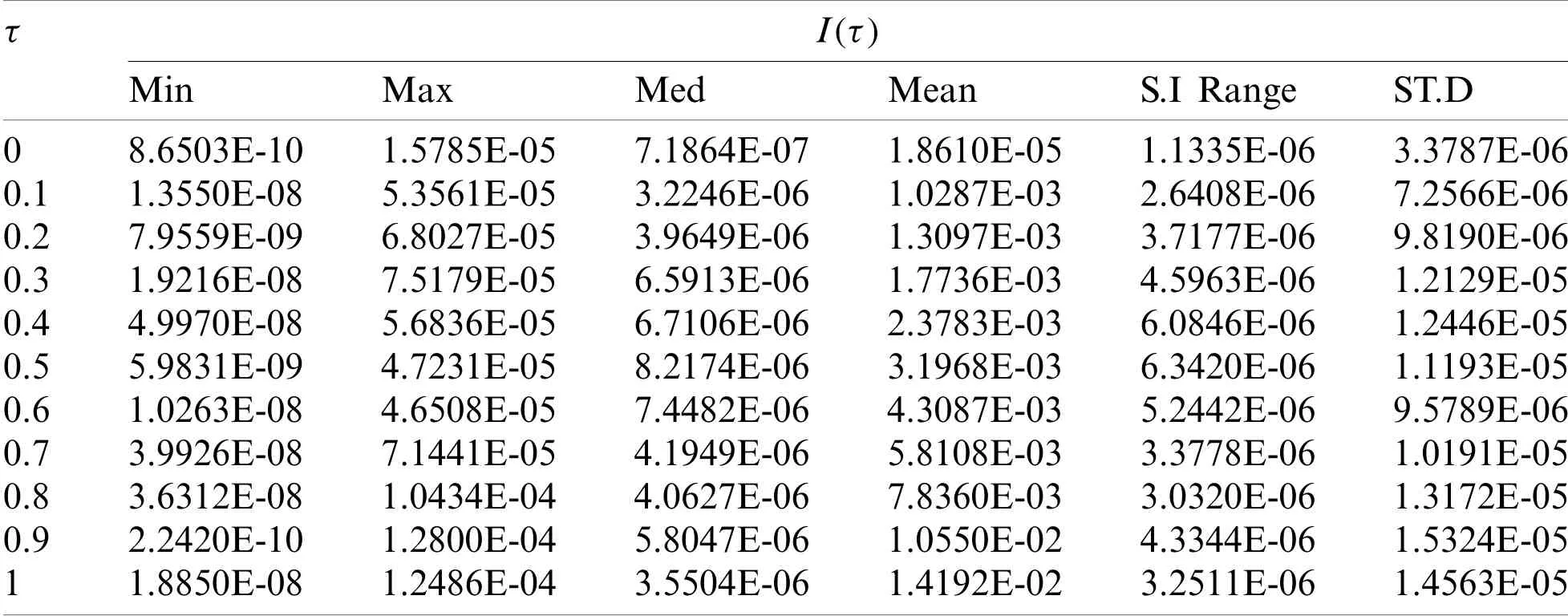
Table 3:Statistical presentations for solving the HIPV nonlinear model based on I(τ) class
The statistical presentations taking different gages like Minimum(Min),S.I Range,standard deviation(ST.D),Maximum(Max),Mean and Median(Med)are used to check the validation of the HIPV nonlinear model given in Tabs.2–5.In these tables,the Min and Max gages respectively indicate the best and worst performances for hundred executions.ForH(τ)class,the performances based on “Min,” “Max,” “Med,” “Mean,” “S.I Range” and “ST.D” lie around 10−06−10−08,10−01−10−02,10−04−10−06,10−02−10−05,10−04−10−06and 10−02−10−05,respectively.ForI(τ)class,the performances based on “Min,” “Max,” “Med,” “Mean,” “S.I Range” and “ST.D” lie around 10−08−10−10,10−04−10−05,10−06−10−07,10−02−10−05,10−05−10−06and 10−05−10−06,respectively.Similarly,forP(τ)class,the performances based on “Min,” “Max,” “Med,” “Mean,”“S.I Range” and “ST.D” lie around 10−07−10−10,10−05−10−06,10−06−10−07,10−03−10−05,10−06−10−07and 10−05−10−06,respectively.Moreover,forV(τ)class,the performances based on“Min,” “Max,” “Med,” “Mean,” “S.I Range” and “ST.D” lie around 10−07−10−09,10−04−10−05,10−05−10−06,10−05−10−06,10−05−10−07and 10−05−10−06,respectively.These small values performances designate the worth and value of the designed scheme to solve the HIPV nonlinear model.One may find through these accomplished actions that the proposed approach is precise,accurate and stable.
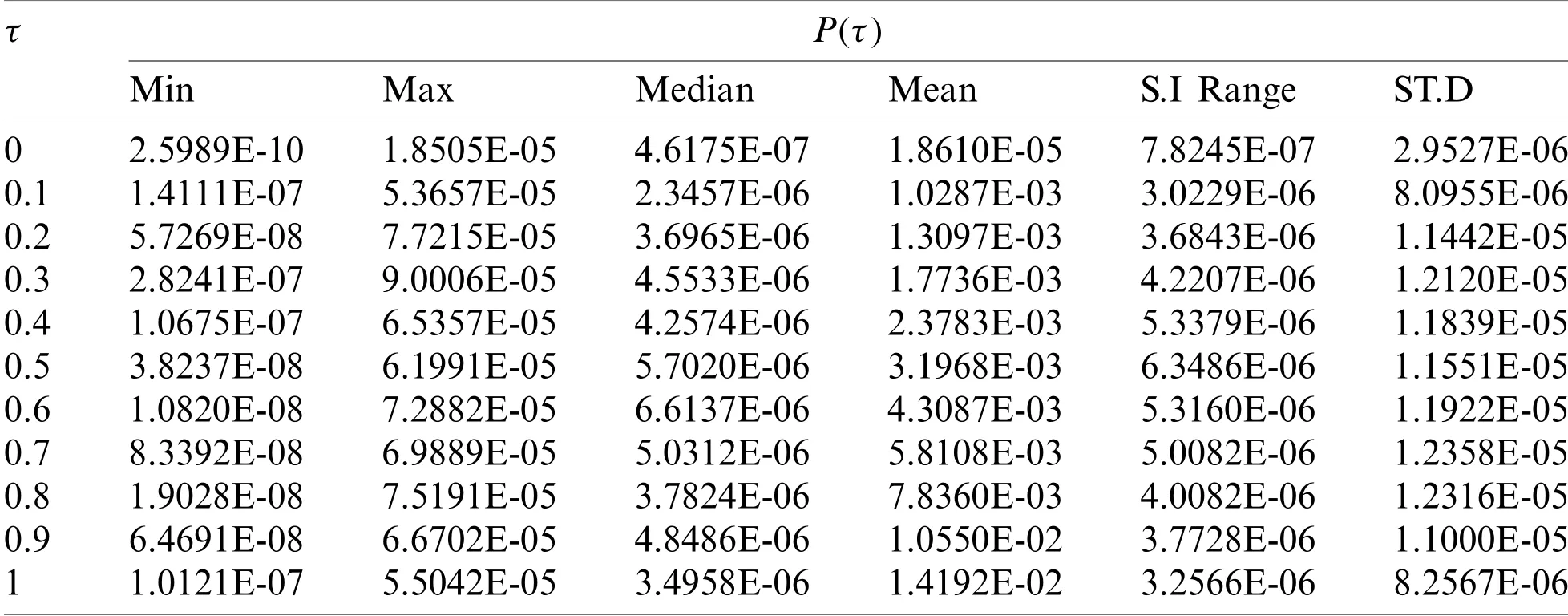
Table 4:Statistical presentations for solving the HIPV nonlinear model based on P(τ) class
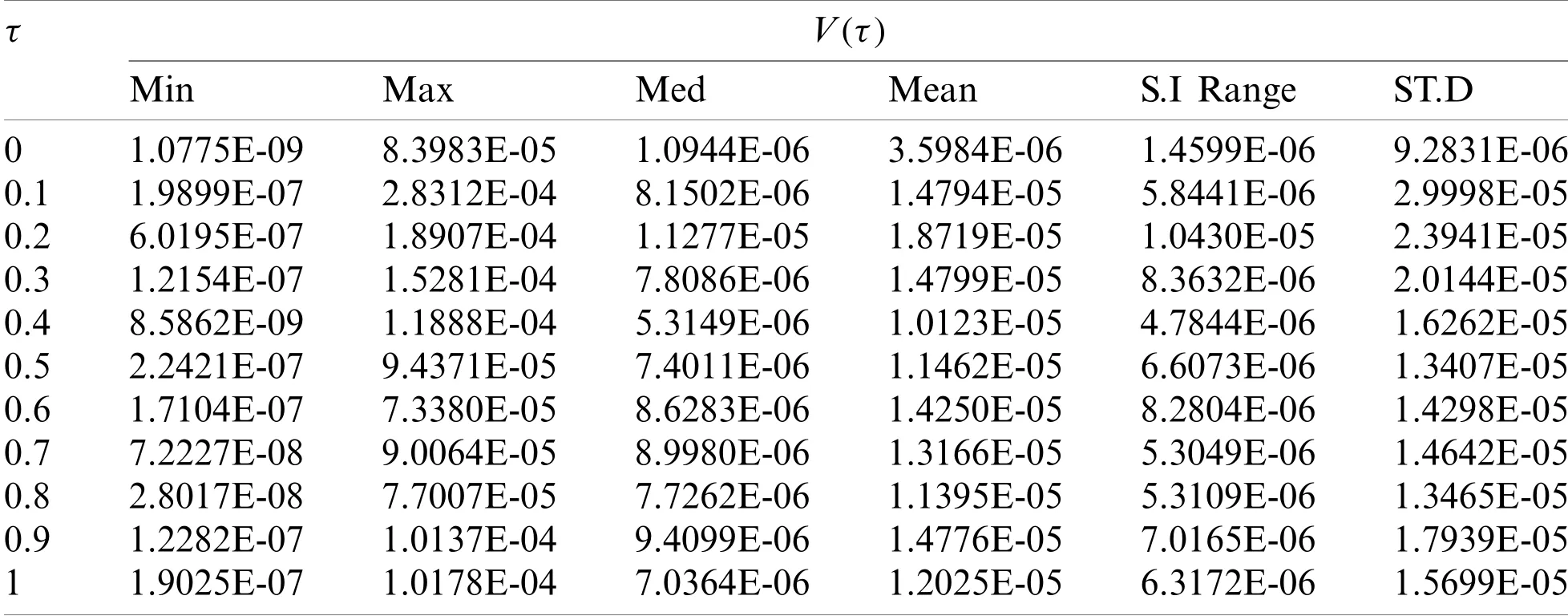
Table 5:Statistical presentations for solving the HIPV nonlinear model based on V(τ) class
The performance of the global “G-MAD,” “G-EVAF” and “G-TIC” operatives for hundred executions based on the proposed scheme are shown in Tab.6 to solve the HIPV nonlinear model.These Min global “G-MAD,” “G-TIC” and “G-EVAF” performances are found around 10−05−10−06,10−09−10−10and 10−06−10−08,while the global S.I Range performances are found around 10−05−10−06,10−09−10−10and 10−06−10−08for the HIPV nonlinear model.These close ideal values of the global performances indicate the precision,accurateness and correctness of the proposed scheme.

Table 6:Global presentations of the TIC,MAD and E-VAF operatives for solving the HIPV nonlinear model
4 Conclusions
The presented work is related to introducing a new prevention class in the nonlinear HIV system named HIPV model.HIV is a virus with no treatment,so prevention is one of the best options to control or spread this type of dangerous virus.The introduced prevention class uses the four subclasses named injection drug,safety measures,avoid from pregnancy and contact rate.This designed HIPV nonlinear model is solved using the ANNs and optimization is performed using the hybrid procedure of GA-ASA.For the convergence of the HIPV model,six different contact rate values have been analyzed through the process of GA-ASA.The reliable accuracy through convergence is obtained using the stochastic GA-ASA process for solving the nonlinear HIPV mathematical model.For the correctness of the designed HIPV model and the proposed stochastic scheme,the proposed results through the GA-ASA optimization process overlapped with the Adams numerical solutions.An activation log-sigmoid function is applied along with 120 variables.For the precision and accuracy of the proposed numerical approach,the statistical based performances of TIC,MAD and E-VAF for 100 executions using 120 variables have been provided.For the TIC,MAD and E-VAF convergence,most of the runs have achieved a very high accuracy level for solving each class of the nonlinear HIPV model.Moreover,the valuations through statistics based Min,ST.D,Mean,S.I range,Max,Median further validate the value of the designed ANN along with the GA-ASA.The global presentations with high ranks of these statistical operators have also been performed for solving the nonlinear HIPV system.
In the future,the designed ANN along with GA-ASA is proficient to solve the prediction model[49,50],fluidics nonlinear systems[51–54],biological nonlinear systems for Hepatitis-B virus[55],transmissibility of measles[56]and novel COVID-19 dynamics[57,58].
Funding Statement:The authors received no specific funding for this study.
Conflicts of Interest:The authors declare that they have no conflicts of interest to report regarding the present study.
杂志排行
Computer Modeling In Engineering&Sciences的其它文章
- Data-Driven Determinant-Based Greedy Under/Oversampling Vector Sensor Placement
- Predicting Genotype Information Related to COVID-19 for Molecular Mechanism Based on Computational Methods
- A Novel Named Entity Recognition Scheme for Steel E-Commerce Platforms Using a Lite BERT
- Deep Learning Applications for COVID-19 Analysis:A State-of-the-Art Survey
- Simulating the Effect of Temperature Gradient on Grain Growth of 6061-T6 Aluminum Alloy via Monte Carlo Potts Algorithm
- Medical Waste Treatment Station Selection Based on Linguistic q-Rung Orthopair Fuzzy Numbers
